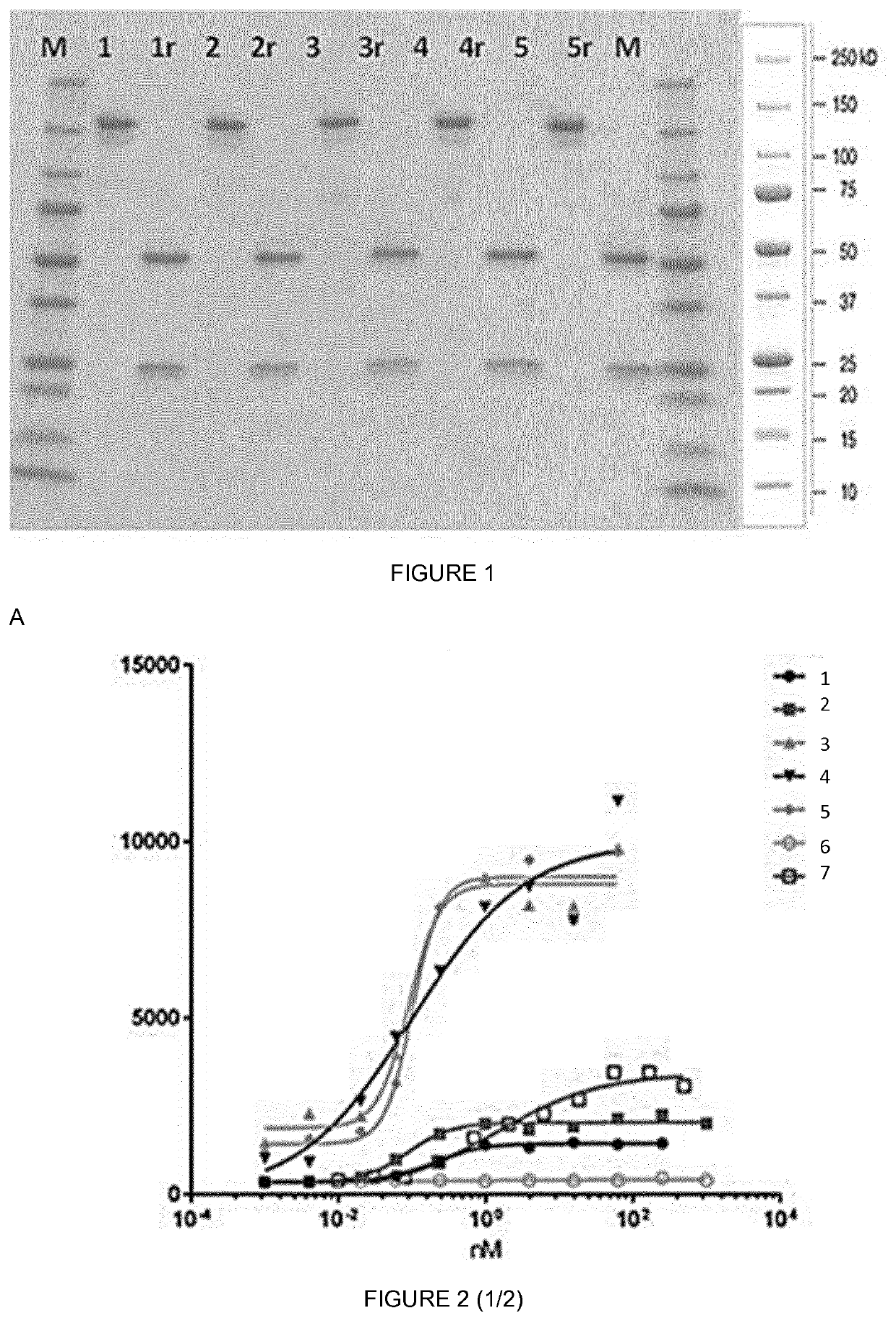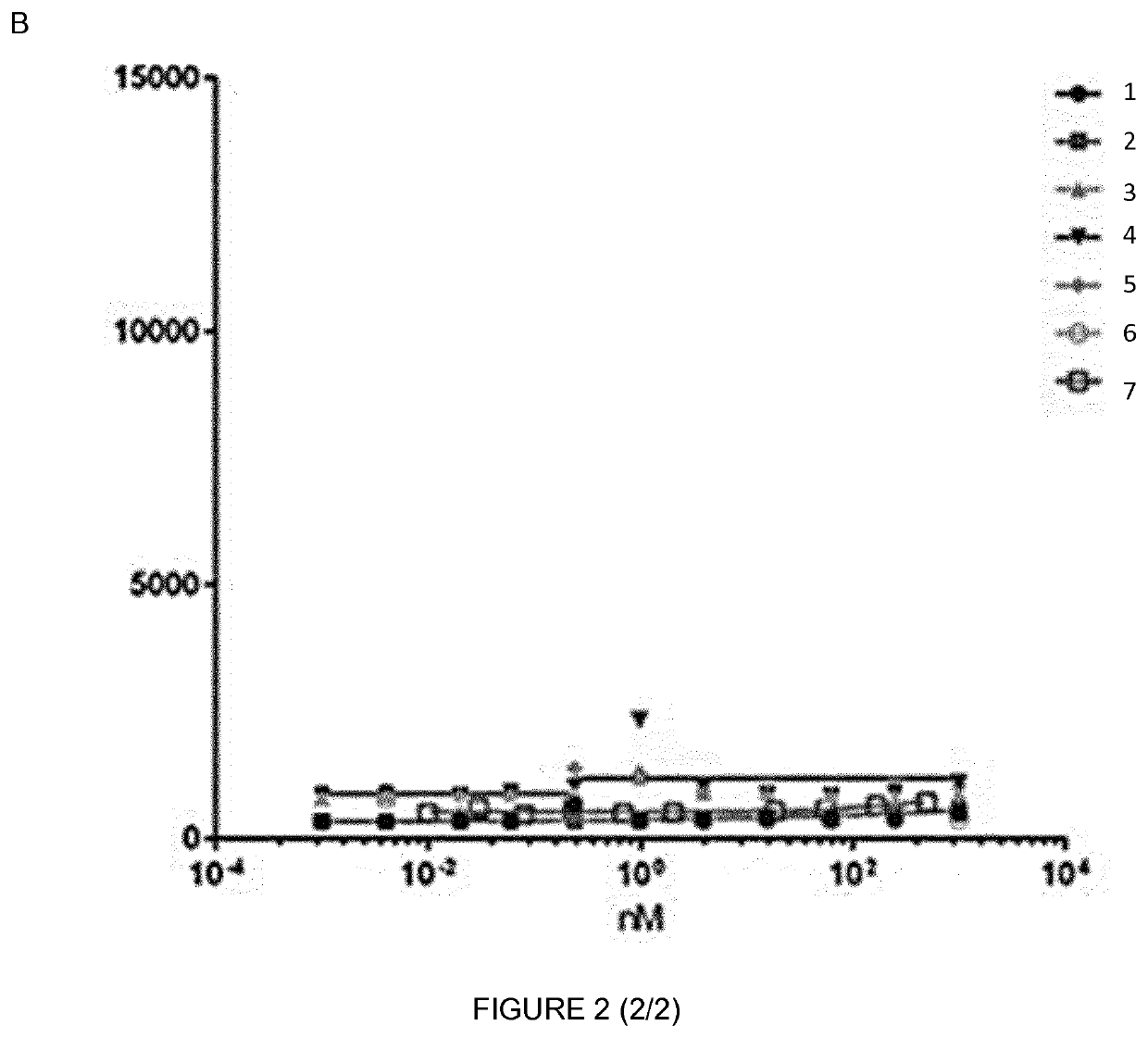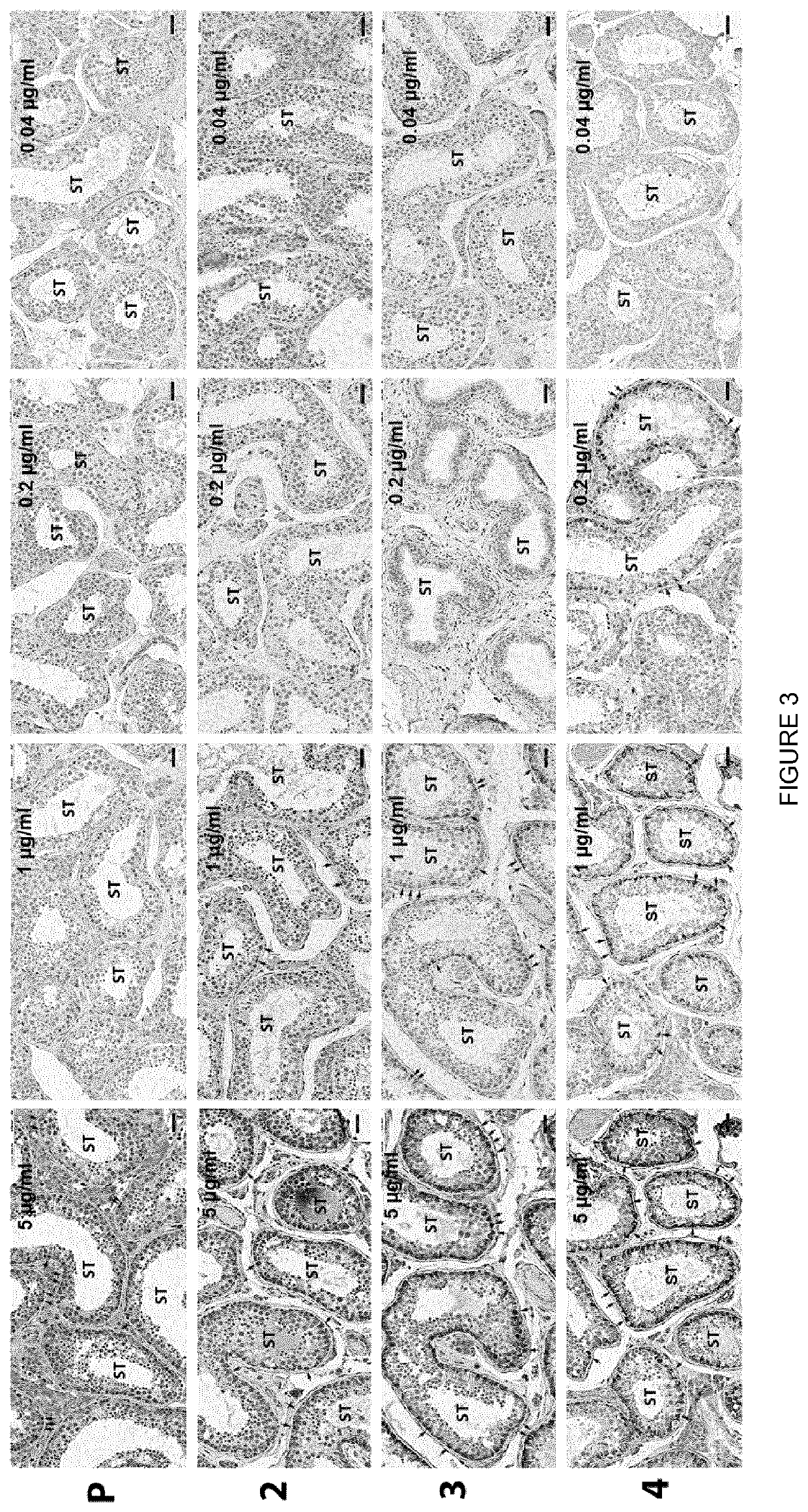Antibodies against the human fshr extracellular domain
- Summary
- Abstract
- Description
- Claims
- Application Information
AI Technical Summary
Benefits of technology
Problems solved by technology
Method used
Image
Examples
example 1
Method of Manufacturing Antibody
1. Genes and Vectors
[0125]For the production of mouse IgG2a anti-huFSHR according the invention where only the heavy chain was randomized, the genes coding for the VH of five different anti human FSHR and the gene coding for the VK of a known FSHR antibody VK (SEQ ID NO 27) designed with BsmBI flanking regions for further cloning into FJB IgG expression vectors, were produced. The nucleotide sequences coding for heavy chain the five different anti human FSHR correspond respectively to sequences SEQ ID NO 28 to 32 in the sequence listing.
[0126]The obtained genes coding for the different VH domains were cloned separately via BsmBI a pcDNA3.1 expression vector in frame with the mouse IgG2a heavy chain constant domains encoding genes. These nucleotide sequences correspond to sequences SEQ ID NO 28 to 32 in the sequence listing. In parallel, the synthetic nucleic acid coding for the VK comprising SEQ ID NO 33 was cloned also via BsmBI restriction endonucle...
example 2
EC50 Determination of Mouse IgG2a Anti-huFSHR
[0131]In order to characterize and to check whether the IgGs anti human FSHR retain specificity for huFSHR and whether they bind to this receptor with higher affinity than known antibody, a binding FACS experiment using different IgGs (MABs) concentrations and huFSHR-L-cell and WT L_cells was performed. These cells were QCed for huFSHR expression.
[0132]In the present, HuFSHR L-cells (L cells stably expressing the human FSH-Receptor), WT L-cells (wild type L-cells; negative control) were used.
[0133]The HuFSHR L-cells were prepared as previously described [Vannier et al 1996 [15]. Briefly, mouse L cells were cotransfected, using the calcium phosphate precipitate method, with the plasmid encoding the hFSHR (pSG5-hFSHR) and with the plasmid pSV-Neo, a vector which confers resistance to the antibiotic G 418. Neomycin-resistant cells were selected in DMEM supplemented with 10% fetal calf serum and G 418 (geneticin, Sigma) (1 mg / mL). The resista...
example 3
Determination of the Optimal Concentration of Mouse IgG2a Anti-huFSHR Antibodies for FSHR Detection by Standard Peroxidase Immunohistochemistry
[0142]In order to determine the optimal concentration of antibodies when used in immunohistochemistry according to the invention, the following materials and methods have been used.
Materials and Methods
[0143]Chemicals: Sodium borohydride, 3-amino-9-ethylcarbazole (AEC), sodium azide, H2O2 30%, goat serum, and haematoxylin Gill solution no 3 were purchased from Sigma-Aldrich, Saint-Quentin Fallavier, France. Shandon ImmuMount medium was obtained from ThermoFisher Scientific, Asniere sur Seine, France.
[0144]Immunohistochemistry: Serial 3-μm-thick sections of human testis tissue (n=30 sections) were cut, attached to SuperFrost slides, deparaffinized with xylene, dehydrated gradually in ethanol and washed with running tap water for 60 min. Access to tissue antigen sites for antibody attachment was enhanced by incubating slides at 90° C. for 40 mi...
PUM
 Login to View More
Login to View More Abstract
Description
Claims
Application Information
 Login to View More
Login to View More - R&D
- Intellectual Property
- Life Sciences
- Materials
- Tech Scout
- Unparalleled Data Quality
- Higher Quality Content
- 60% Fewer Hallucinations
Browse by: Latest US Patents, China's latest patents, Technical Efficacy Thesaurus, Application Domain, Technology Topic, Popular Technical Reports.
© 2025 PatSnap. All rights reserved.Legal|Privacy policy|Modern Slavery Act Transparency Statement|Sitemap|About US| Contact US: help@patsnap.com



